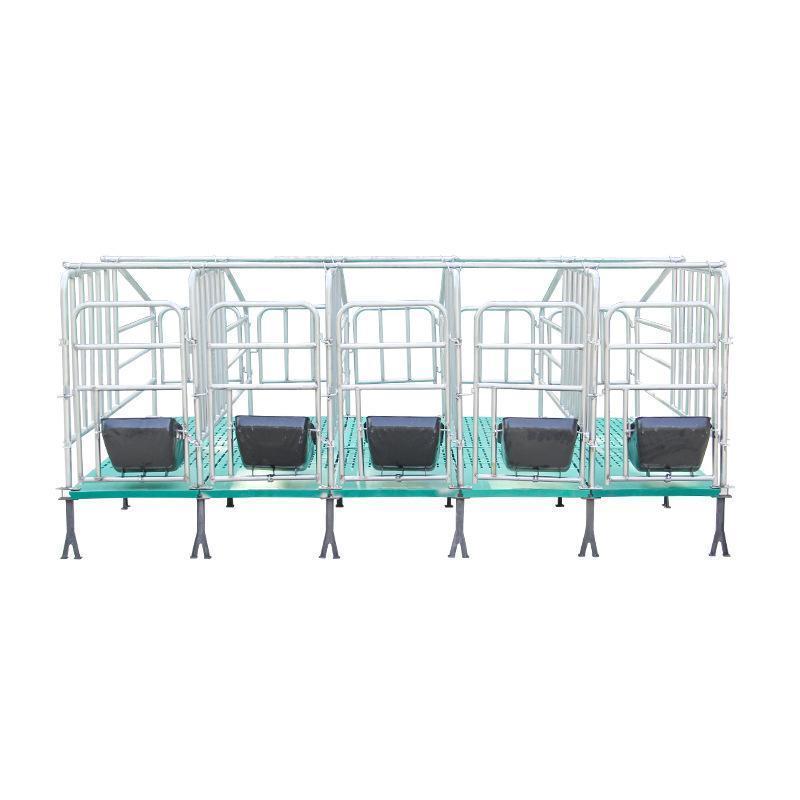pig fattening pen
Nov . 03, 2024 05:13 Back to list
pig fattening pen
Pig Fattening Pen Optimal Conditions for Growth
The pig fattening pen, a vital component of modern pig farming, plays a significant role in the growth and development of swine, particularly during their finishing phase
. This period is crucial, as it directly influences the overall weight gain, health, and quality of the pork produced. Designing an efficient and effective fattening pen involves careful consideration of various factors that affect the pigs' well-being and productivity.One of the foremost considerations is space. Each pig requires adequate room to move freely, which promotes natural behaviors and reduces stress. A general guideline suggests providing at least 0.6 to 1 square meter per pig, depending on their size and breed. Overcrowding can lead to aggression, injuries, and the spread of diseases, ultimately impacting growth rates.
Ventilation is another critical aspect of pig pen design. Proper airflow helps to maintain a comfortable temperature and reduces humidity levels, both of which are important for the health of the pigs. Stale air can lead to respiratory problems and can affect feed intake. Thus, a well-ventilated pen not only promotes good health but also enhances feed efficiency, leading to better weight gain.
pig fattening pen

In addition to space and ventilation, flooring plays a crucial role in a pig fattening pen. Solid, non-slip surfaces that provide good traction are essential to prevent injuries. Slatted floors can be effective for waste management, as they help keep the pen cleaner and reduce the spread of pathogens. However, care must be taken to ensure that the flooring is comfortable for the pigs, minimizing the risk of leg and joint problems.
Feeding practices in the pen should be carefully managed to optimize growth. Pigs should have access to a balanced diet rich in energy, protein, vitamins, and minerals. A specialized feed regimen can significantly impact weight gain and overall health. It's important to monitor feeding behavior and adjust rations based on the pigs' growth patterns and individual needs.
Lastly, health management is paramount. Regular veterinary check-ups and vaccinations are essential to prevent outbreaks of diseases that could devastate the herd. Maintaining a clean environment, combined with proper biosecurity measures, will safeguard the health of the pigs and promote faster gains.
In conclusion, a well-designed pig fattening pen encompasses various elements that work together to create an optimal environment for swine growth. By focusing on space, ventilation, flooring, nutrition, and health management, pig farmers can enhance productivity while ensuring the well-being of their animals. This holistic approach not only benefits the pigs themselves but also contributes to the overall sustainability and profitability of the farming operation.
-
Automatic Feeding Line System-Poultry Farming|Chicken Feeding&Watering
NewsJul.30,2025
-
Automatic Feeding Line System - Anping County Yize Metal Products Co., Ltd.|Pan Feeder Nipple Drinker,Broiler Farming
NewsJul.30,2025
-
Automatic Feeding Line System Pan Feeder Nipple Drinker-Anping County Yize Metal Products Co., Ltd.
NewsJul.30,2025
-
Automatic Feeding Line System-Anping County Yize Metal Products Co., Ltd.|Durable Construction&Easy Maintenance
NewsJul.30,2025
-
Automatic Feeding Line System-Anping County Yize Metal Products Co., Ltd.|Pan Feeder Nipple Drinker&Durable Poultry Farming Solution
NewsJul.30,2025
-
Automatic Feeding Line System Pan Feeder Nipple Drinker|Anping County Yize Metal Products Co., Ltd.
NewsJul.29,2025






